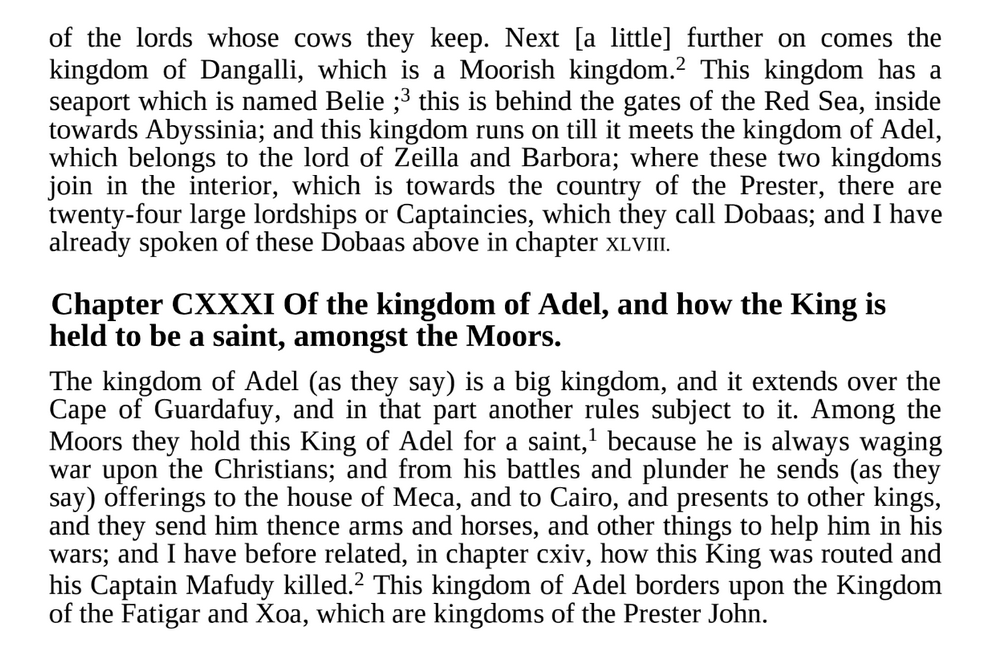Stone buildings and trade centers existed in Ghana,Mali, Benin, Songhai in West Africa and in South Africa it existed in Great Zimbabwe which was a trade settlement.
As for Ethiopia there was Axum with urban settlements and stone buildings on par with Rome and Greece and it existed for a considerable period. After it's collapse due to soil destruction in the North and being cut off from the coast by Muslim domination. The Christian power became centered in the central highlands landlocked and it took a rural feudal war driven shape for ideological survival and but due to the introduction of Portuguse and European Christian trade partners they manage to form Gondar a trade settlement with stone buildings but still retaining a feudal structural tendencies and being landlocked still hindered it's economic progress.
Feudal Abyssinia was more than just handicapped by lack of urban trade settlements. It leadership prevented agricultural surplus production as well in it's rural areas and deviated all resources/man power to costly war efforts on it's neighbors. The end result was sustained poverty.
So you are wrong. And also i don't understand the obsession with framing Somali society of consisting of only stone building/settlements which is not the case: As i explained here:
Build a random building of stone in a random place you can find, exhaust yourself and your resources and when no one can afford to live in it or find use of it it will decay.
Afterwards come back to me peddling this stone city bs you love rinsing.
It's just a settlement that is a byproduct of trade and commerce. There is nothing more to it than that.
Economic boom can happen outside an urban town for example agricultural surplus in a rural area
Again there is no Golden Age because Somali history exists on contimuum. There is no set date.
That's what you do. You reduced Somali history to only 1500s or the medieval period. When the history is in a continuation
It's like when when Europeans try to center all of Islamic history around an imagined Golden age.
The Myth of the 'Islamic Golden Age'
More time passed between 1100s - 1600s in medieval Somalia than late 1700s and 1900s. . But the developmental trajectory were similar with the exception of capitalist exploitation of labour.
Several of the towns and cities in Europe post Western Roman collapse were abandoned and the ones that remaining ones were reduced in size because of trade decline, internal war, famine and invasions. Similar to what happened in Somalia between mid 1500s and late 1700s.
None of them were castle towns. They didn't just consists of castles and you need agricultural centres and grazing land, how else are you going to produce foods to sustain the towns? and populations?
Are you even listening to yourself?
There was several Somali leaders with military success and provided resistance during the 1800s- 1900s. You guys even posted 1 of them being featured by Al-Jazera in the history section just yesterday Sayyid Abdullah Hassan. Also those medieval figures were more about defending their territories and re-claiming it not really just conquering and erasing other entities.
And there was several influential scholars during the 1700s-1900s as well. The number of Ulema proliferated as well . Scott Reese dedicates a few pages to this when talking about Ulema from East Africa:
Manuscript and Print in the Islamic Tradition and it was the same trend as in medieval period with Al-Azhar/Cairo as well. Among the countless many residents there two that stand out Umar Ahmad al-Somali and Shaykh Abdullahi al-Qutbi being a professor and in inner Egyptian political/scholarly circles.
Just like i said here:
I encourage you to read that article linked.


